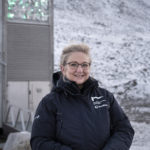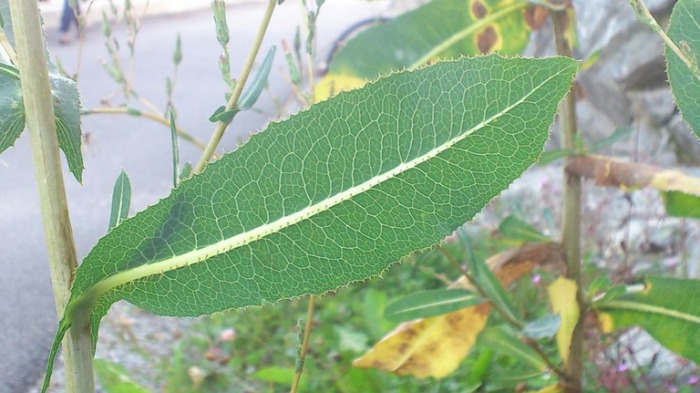Norway
February 14, 2022
Two Norwegian ministers participated in this year’s first opening of the Seed Vault when thousands of seed samples from nine genebanks were secured. The deposit from NordGen contain a wide range of biodiversity, for example wild lettuce and alpine timothy, which can be important for developing agricultural crops adapted to climate change.
This week, the portal to Svalbard Global Seed Vault opened. During the deposit, more than 20,000 seed samples in 39 boxes were brought into the Vault by staff from NordGen, one of the genebanks (see facts below) in the deposit.

Lise Lykke Steffensen, NordGen’s executive director.
– A genebank collection is invaluable. Having a copy in the Seed Vault is an extra insurance to be able to conduct agriculture and produce food in the future, says Lise Lykke Steffensen, NordGen’s director who was present during the seed position on Svalbard.
Norwegian Ministers
Also present were representatives from the Slovak genebank RIPP, Stefan Schmitz, director of the international organization Crop Trust, Norway’s Minister for International Development, Anne Beathe Tvinnereim, and the Norwegian Minister for Agriculture and Food, Sandra Borch.

Lise Lykke Steffensen, Stefan Schmitz, Sandra Borch and Anne Beathe Tvinnereim.
– We are always excited to receive new species into the Seed Vault. The future of the world’s food and nutrition security depends not only on the genetic diversity we have within the major food crops – but also on the diversity of crops that small scale farmers rely on, said Sandra Borch.
The species in the seed deposition represent a wide range of biological diversity, something that was also noticed in NordGen’s three boxes containing 1350 seed samples of 101 plant species. This diversity includes cereals and seeds of medicinal plants, fodder crops and vegetables such as cabbage, carrots, lettuce, parsley, onions and asparagus.
Potential for Northern Peas
The deposit list from NordGen also contains just over 200 seed samples of peas. Among these is Norrøna, a sugar pea of Norwegian origin that was part of NordGen’s research project Arctic Pea. In the project, 50 peas from NordGen were test cultivated at four locations in the Nordic region. The results showed that there is a potential to grow peas for green harvest all the way up in Norwegian Tromsø north of the Arctic Circle.
– There are more than 2000 different peas in NordGen’s collection. This genetic diversity can be important if the Nordic countries want to increase the production of plant-based protein crops. Arctic Pea shows the potential to grow peas in more places in the Nordic region, says Lise Lykke Steffensen.
More than 400 of the seed samples in NordGen’s deposit are crop wild relatives (CWR), wild plant species that are related to cultivated crops. These wild plants carry important traits, such as resistance to drought and diseases. Therefore, they can be important for developing new agricultural crops that are better adapted to climate change.

Anna Palmé, NordGen’s expert on Nordic CWR.
– About 20 percent of the Nordic seed collection consists of wild material. Many of the species we sent to Svalbard are on the Nordic CWR priority list. These plants are especially important for Nordic plant breeding, says Anna Palmé, NordGen’s CWR expert.
Wild Lettuce Necessary
One of these is Lactuca serriola, prickly lettuce, which is considered to be the origin of our cultivated lettuce. Lettuce carries resistance genes to the mold pathogen Bremia lactucae, which can cause large crop losses. For plant breeding companies, it has been necessary since the 1920s to regularly use wild lettuce in the plant breeding to produce resistant commercial varieties.

Lactuca serriola, prickly lettuce.
Another example of a CWR in NordGen’s seed boxes that is considered important to preserve for future food production is Phleum alpinum, alpine timothy. The plant is related to timothy, the most important fodder grass in large parts of the Nordic region.
After this deposit, the Seed Vault holds more than 1.1 million seed samples of almost 6,000 plant species from 89 gene banks around the world – the world’s largest and most varied genebank collection.
The global seed vault on Svalbard was established and owned by Norway, the operation is carried out in a partnership between the Norwegian Ministry of Agriculture and Food, NordGen and Crop Trust.
Genebanks in the February Deposit
- The Australian Pastures Genebank / PIRSA-SARDI – Australia.
- Julius Kühn Institute (JKI) – Germany.
- Leibniz Institute of Plant Genetics and Crop Plant Research (IPK) – Germany.
- International Center for Agricultural Research in the Dry Areas (ICARDA) – Morocco.
- Margot Forde Germplasm Center (MFGC) – New Zealand.
- The Nordic Genetic Resource Center (NordGen) – Nordic countries.
- Suceava Genebank “Mihai Cristea” – Romania.
- Research Institute of Plant Production in Pišťany (RIPP) – Slovakia
- Agricultural Plant Genetic Resources Conservation and Research Center (APGRC) – Sudan